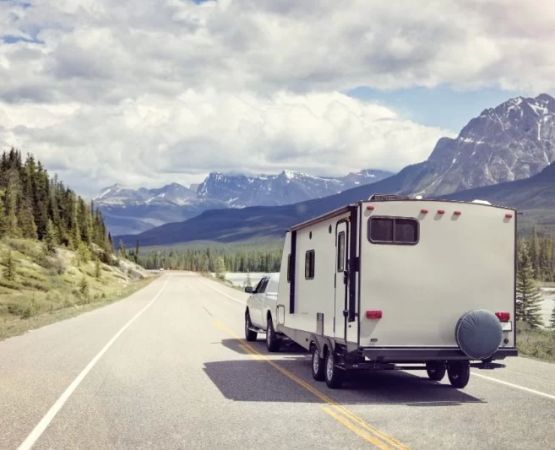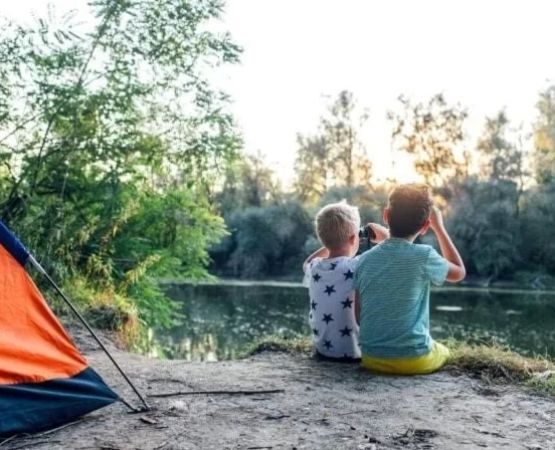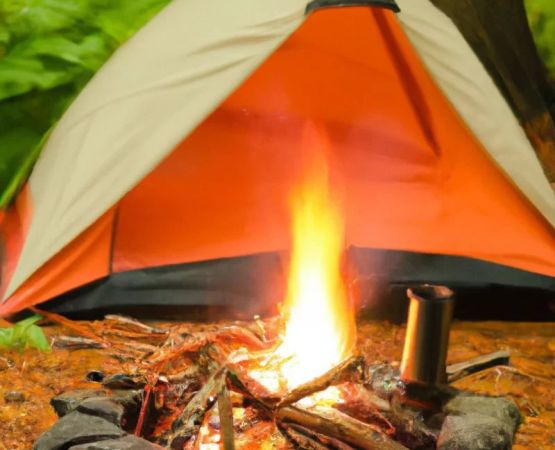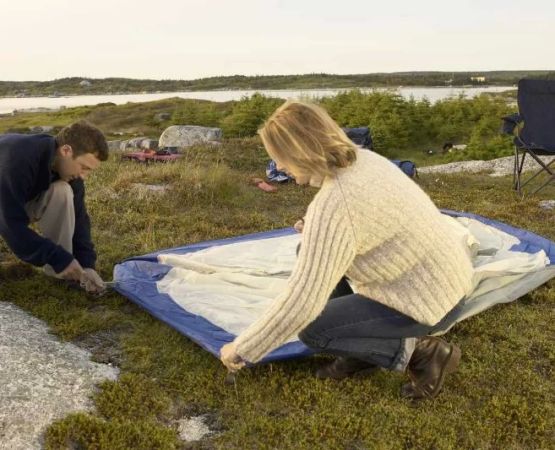How to Stay Warm and Dry During Cold Weather Camping: Essential Tips for Winter Adventures
- Why Staying Warm and Dry Is Crucial
- Choosing the Right Gear for Cold Weather Camping
- Layering Techniques for Cold Weather
- Setting Up Camp in Winter Conditions
- Real-Life Experiences: A Winter Camping Story
- Booking Your Cold Weather Camping Experience with Pine Cliff Resort
1. Why Staying Warm and Dry Is Crucial
Cold weather camping is one of the most rewarding experiences for outdoor enthusiasts, but it comes with unique challenges. Staying warm and dry is not just about comfort—it’s essential for safety. Exposure to the cold, especially when coupled with wet conditions, can lead to hypothermia, frostbite, and other serious health risks. Ensuring that you remain warm and dry allows you to enjoy the experience while avoiding these dangers.
When camping in winter, your body expends more energy to stay warm, which makes proper clothing, sleeping gear, and shelter even more important. With the right strategies in place, you can make your cold weather camping trip safe, enjoyable, and comfortable.
2. Choosing the Right Gear for Cold Weather Camping
Having the right gear is crucial for staying warm and dry during cold weather camping. Without the appropriate equipment, you risk being uncomfortable or even unsafe. Here are the key items to focus on:
- Winter Sleeping Bag: Choose a sleeping bag rated for temperatures lower than the forecasted minimum. Sleeping bags designed for winter use are often filled with synthetic or down insulation, which provides warmth even in freezing temperatures.
- Insulated Sleeping Pad: An insulated sleeping pad acts as a barrier between you and the cold ground, providing an extra layer of warmth and comfort while you sleep.
- Winter Tent: A three-season tent might not cut it in extreme cold. Consider a four-season tent, which is built to withstand heavy snow and high winds. It’s essential to choose a tent that provides proper ventilation to avoid condensation inside.
- Waterproof and Insulated Clothing: Waterproof layers, such as jackets and pants, will keep you dry in wet conditions, while insulated layers like fleece or down will help you retain heat. Don't forget to bring waterproof gloves, socks, and boots to ensure your extremities stay warm.
3. Layering Techniques for Cold Weather
Layering is the most effective way to regulate your body temperature in cold weather camping. By wearing multiple layers, you can add or remove clothing based on your activity level and the weather conditions. Here’s a breakdown of the best layering techniques:
- Base Layer: The first layer should be moisture-wicking to keep sweat away from your skin. Wool or synthetic fabrics are great choices because they retain warmth even when wet.
- Insulating Layer: The middle layer is for insulation. Fleece, down, or synthetic materials work best for trapping body heat.
- Outer Layer: The outer layer should protect you from the elements—wind, rain, and snow. A waterproof and windproof jacket or shell will keep you dry and shielded from the cold.
By mastering the art of layering, you can adjust your clothing to stay comfortable throughout your outdoor adventure, whether you're hiking, setting up camp, or relaxing by the fire.
4. Setting Up Camp in Winter Conditions
Setting up camp in cold weather presents some unique challenges, but with the right techniques, you can create a comfortable and secure shelter. Here are a few tips for winter camping:
- Choose Your Campsite Wisely: Look for a flat area that’s sheltered from the wind, such as behind a hill or large trees. Avoid low-lying areas where cold air can settle, making the temperature drop even more.
- Build a Snow Shelter (If Necessary): If you're camping in an area with heavy snow, consider digging a snow shelter or building a snow wall around your tent for added insulation and protection from the wind.
- Prepare Your Tent: Keep your tent tight and secure. Snow can accumulate on your tent, so make sure it's pitched properly to avoid collapse. Keep the inside of your tent dry by using a moisture-absorbing mat.
5. Real-Life Experiences: A Winter Camping Story
Many outdoor enthusiasts have shared incredible experiences of cold weather camping. Take, for example, Sarah and John, who decided to try winter camping in the Rocky Mountains. They faced temperatures below freezing, but thanks to their high-quality gear, including an insulated tent and down sleeping bags, they were able to stay warm and dry even in the harshest conditions. They also found that cooking a hot meal by the campfire, wrapped in layers, was the highlight of their evening.
“The crisp air, the sound of the snow crunching underfoot, and the starry sky made it all worth it,” Sarah shared. “Staying warm was the key. We made sure to layer properly, and our insulated sleeping pads helped keep the cold from seeping into our tent.”
6. Booking Your Cold Weather Camping Experience with Pine Cliff Resort
If you're looking for an unforgettable winter camping experience, Pine Cliff Resort offers incredible winter getaway packages. From cozy cabins to guided snowshoeing tours, Pine Cliff Resort provides the ideal base for your cold weather adventure. Whether you're a seasoned camper or a first-timer, they offer everything you need to stay warm, dry, and comfortable during your stay.
Don't miss out on the chance to immerse yourself in winter's beauty. Visit Pine Cliff Resort today to learn more about their winter packages and start planning your next cold weather adventure!






